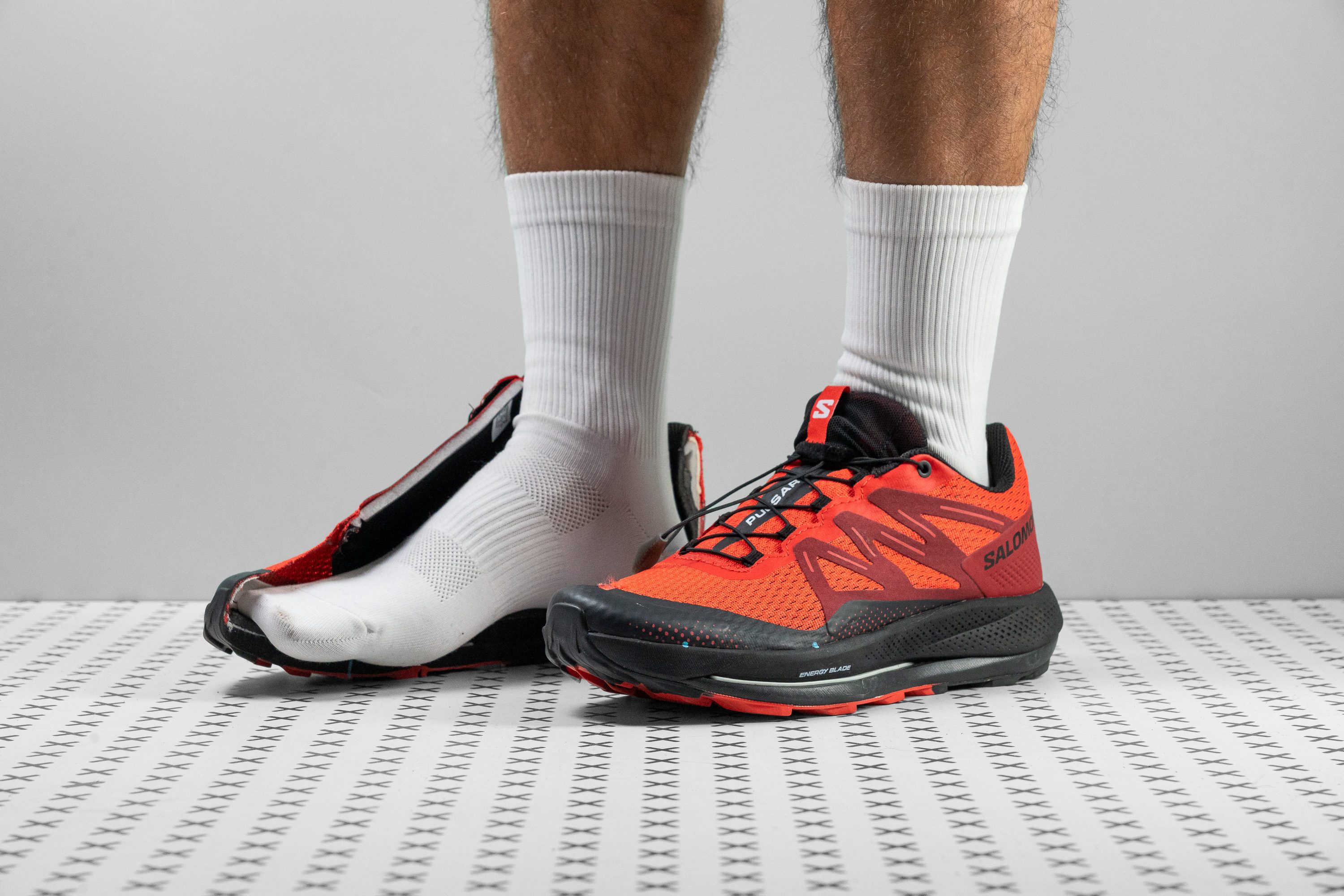Our verdict
- Top pick in best Salomon trail running shoes
Pros
- Stable and protective ride
- Versatile for occasional road use
- Enhanced heel lockdown
- Robust durability
- Suitable for all footstrikes
- Good breathability in the toebox
- Fairly priced at $130
Cons
- Not suitable for wet terrain
- Slightly on the heavier side
Audience verdict
Comparison
The most similar running shoes compared
+ + Add a shoe | |||||
|---|---|---|---|---|---|
| Audience score | 87 Great! | 76 Decent! | 86 Good! | 86 Good! | |
| Price | £140 | £100 | £140 | £100 | |
| Trail terrain | Light | Light | LightModerate | Light | |
| Shock absorption | - | - | Moderate | - | |
| Energy return | - | - | Moderate | - | |
| Arch support | Neutral | Neutral | Neutral | Neutral | |
| Weight lab Weight brand | 9.9 oz / 281g 9.9 oz / 280g | 10.7 oz / 302g 9.9 oz / 282g | 10.1 oz / 286g 9.2 oz / 260g | 9.9 oz / 282g 10.4 oz / 294.8g | |
| Drop lab Drop brand | 7.2 mm 6.0 mm | 8.0 mm 8.0 mm | 7.2 mm 6.0 mm | 9.2 mm 8.0 mm | |
| Strike pattern | Mid/forefoot | HeelMid/forefoot | Mid/forefoot | HeelMid/forefoot | |
| Size | True to size | Half size small | True to size | True to size | |
| Midsole softness | Soft | Balanced | Soft | Balanced | |
| Difference in midsole softness in cold | Small | Normal | Big | Big | |
| Plate | Rock plate | ✗ | ✗ | ✗ | |
| Toebox durability | Decent | Good | Bad | Bad | |
| Heel padding durability | Good | Decent | - | Bad | |
| Outsole durability | Good | Decent | - | Decent | |
| Breathability | Moderate | Breathable | Moderate | Moderate | |
| Width / fit | Medium | Medium | Narrow | Medium | |
| Toebox width | Medium | Wide | Narrow | Wide | |
| Stiffness | Stiff | Stiff | Moderate | Stiff | |
| Torsional rigidity | Stiff | Moderate | Flexible | Moderate | |
| Heel counter stiffness | Moderate | Moderate | Moderate | Stiff | |
| Lug depth | 2.5 mm | 2.4 mm | 2.8 mm | 2.7 mm | |
| Heel stack lab Heel stack brand | 31.0 mm 32.6 mm | 32.2 mm 32.0 mm | 30.6 mm 32.0 mm | 32.1 mm 30.0 mm | |
| Forefoot lab Forefoot brand | 23.8 mm 26.6 mm | 24.2 mm 24.0 mm | 23.4 mm 26.0 mm | 22.9 mm 22.0 mm | |
| Widths available | Normal | NormalWide | Normal | Normal | |
| Season | All seasons | SummerAll seasons | All seasons | All seasons | |
| Removable insole | ✓ | ✓ | ✗ | ✓ | |
| Orthotic friendly | ✓ | ✓ | ✗ | ✓ | |
| Ranking | #149 Top 40% | #348 Bottom 7% | #179 Top 48% | #183 Top 49% | |
| Popularity | #297 Bottom 20% | #180 Top 48% | #209 Bottom 44% | #261 Bottom 30% |
Who should buy
We believe the Pulsar Trail is an excellent choice for those seeking:
- A versatile, jack-of-all-trails shoe that excels at both fast and slow paces, perfect for short jogs or long-distance adventures.
- A reliable trail shoe with solid grip in dry conditions, featuring a comfortable and durable upper.
- A stable trail running shoe that can double as a walking or hiking shoe if needed.

Who should NOT buy
The Salomon Pulsar Trail excels in many areas, yet we found it falls short on technical terrain. If your runs involve mud, roots, or wet conditions, the Salomon Speedcross 6 or its Gore-Tex variant, the Speedcross 6 GTX, would be a better fit.
Also, it may not be the ideal choice for fans of maximalist trail running shoes due to its relatively thin midsole by today's standards. If you're looking for a shoe with a more substantial midsole, we suggest the Merrell Agility Peak 5 or the Hoka Mafate Speed 4 instead.
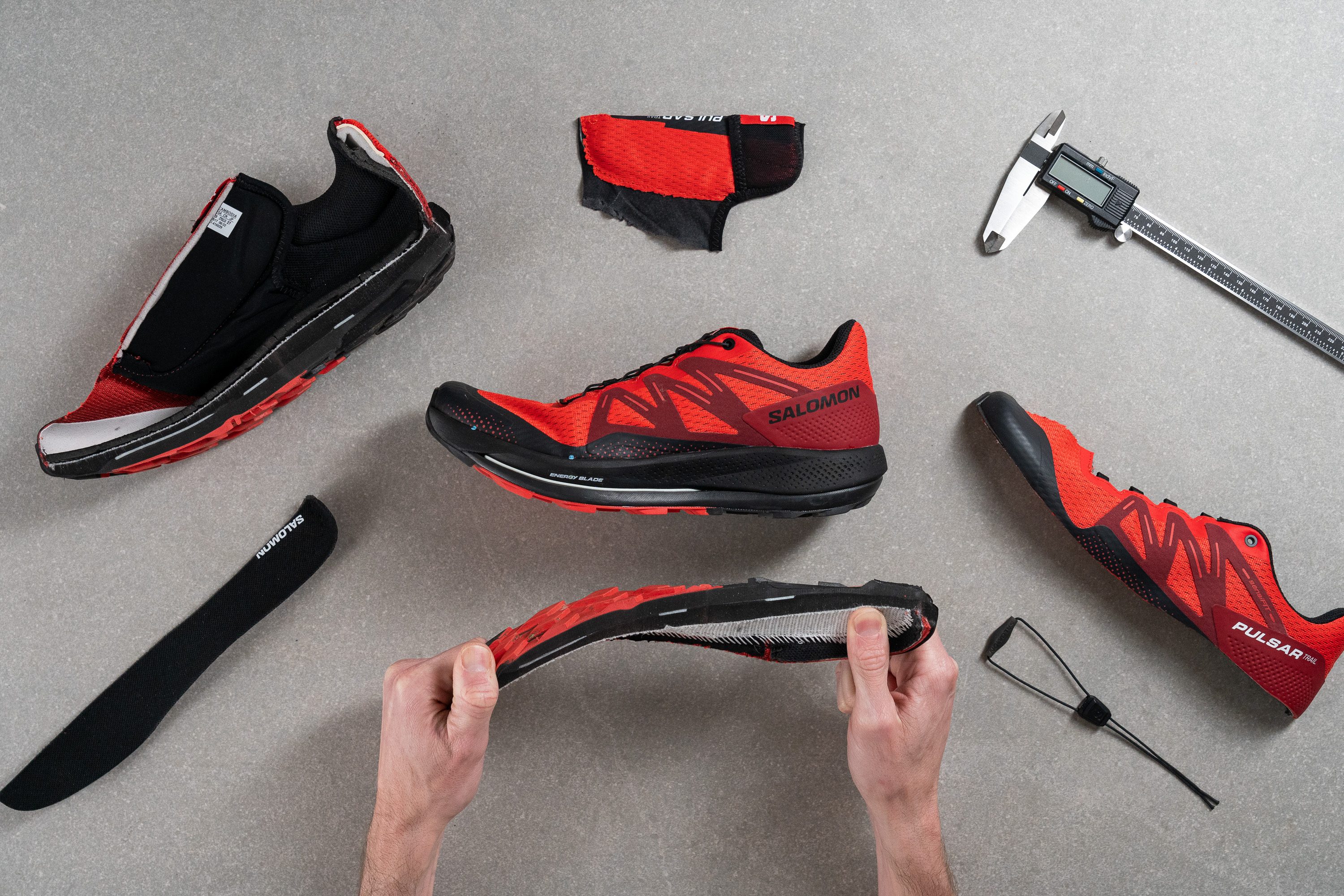
Cushioning
Heel stack
When we used a calliper to measure the shoe's heel stack, it came out to 31.0 mm, just a bit below average.
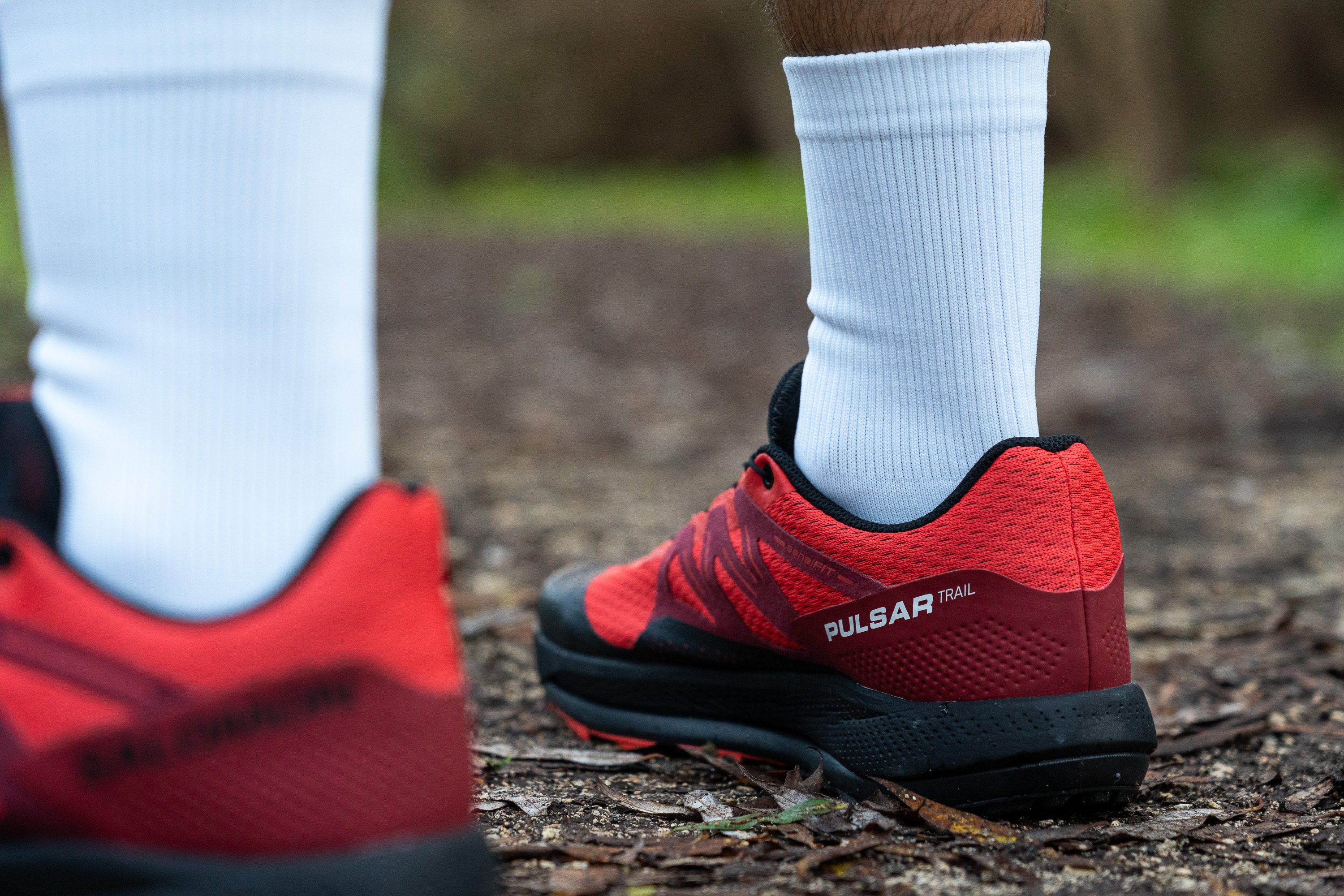
Honestly, we thought it would be taller, considering the shoe's weight.
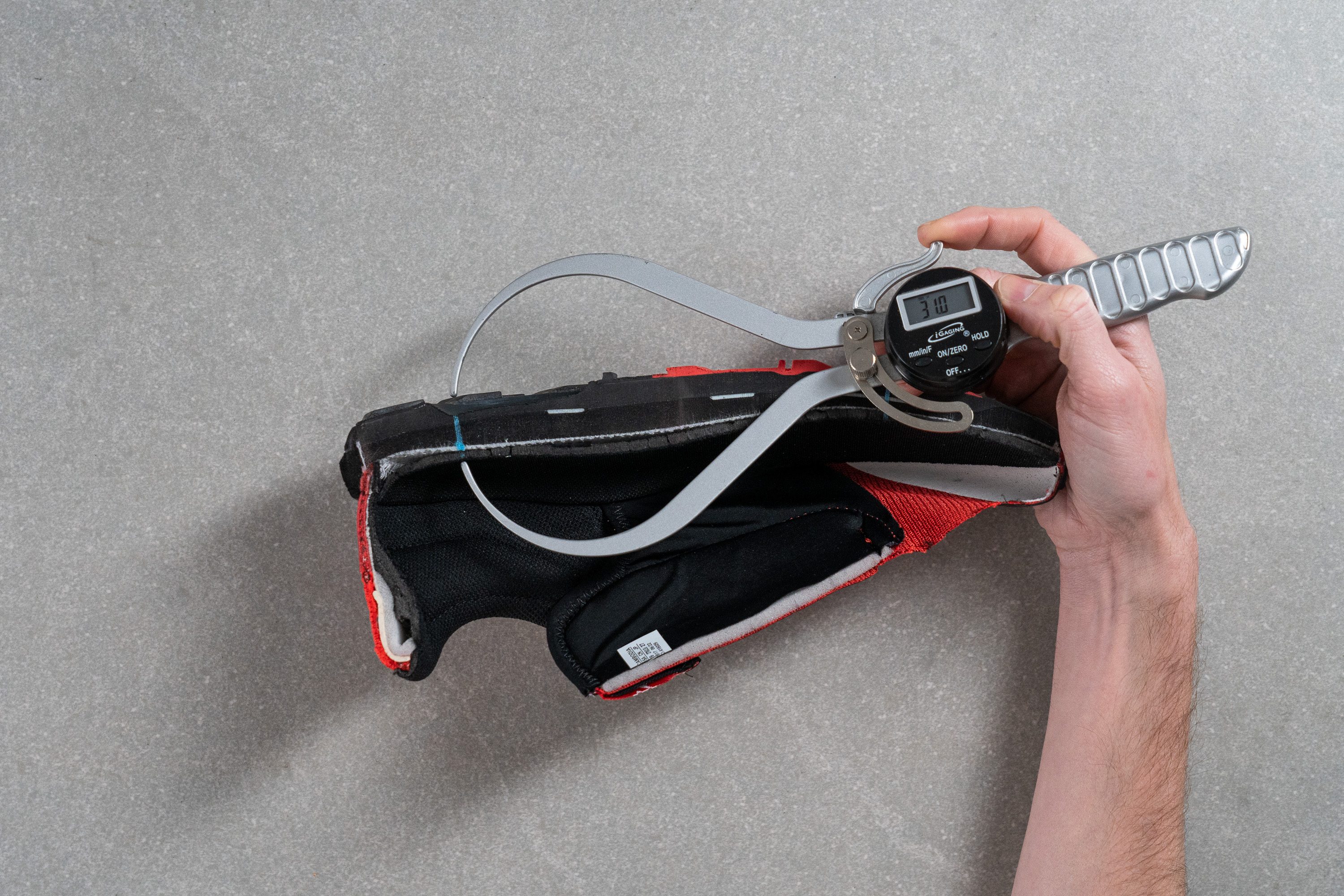
| Pulsar Trail | 31.0 mm |
| Average | 32.6 mm |
Forefoot stack
The Pulsar Trail's stack height in the forefoot drops to 23.8 mm.
This is slightly thinner than the average, steering the shoe towards a more agile design and away from the bulkier, maximalist trends of other trail running shoes.
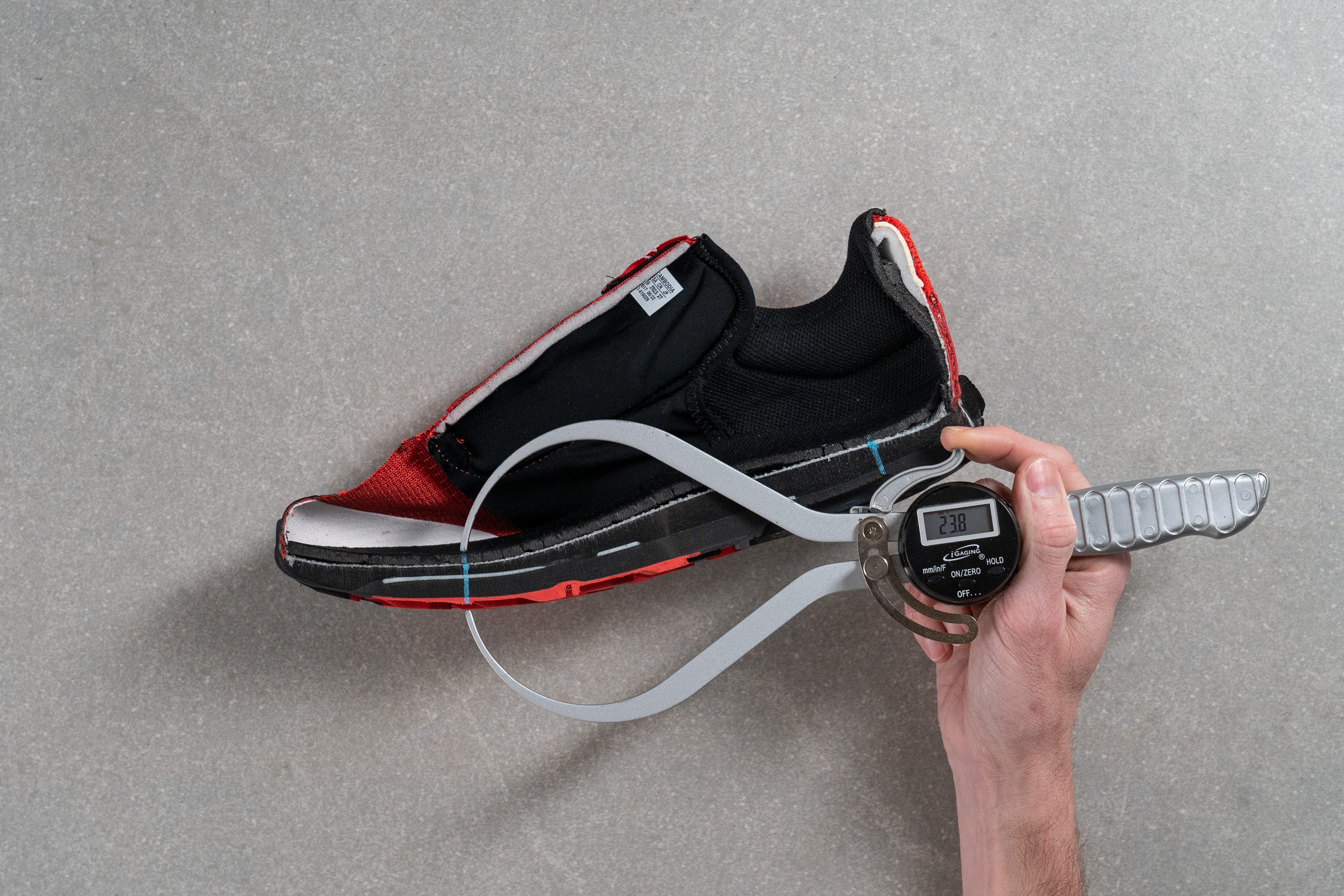
| Pulsar Trail | 23.8 mm |
| Average | 25.1 mm |
Drop
The difference between our previous two measurements gives the shoe a 7.2-mm drop.
This design suits almost every type of footstrike, except for those seeking a minimalist, zero-drop shoe. For that, an Altra might be a better fit.
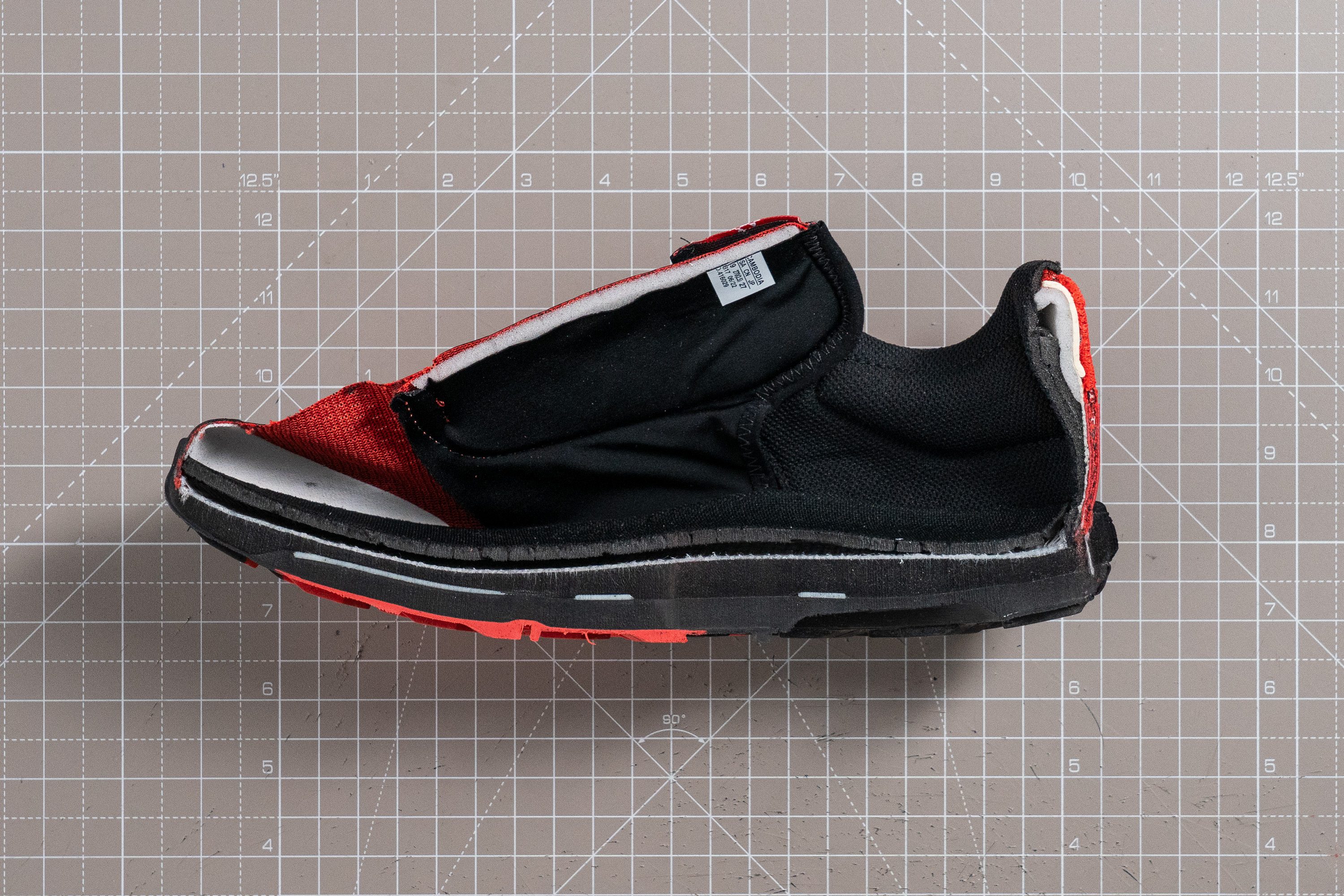
| Pulsar Trail | 7.2 mm |
| Average | 7.5 mm |
Midsole softness
There's a lot to talk about with the midsole.
First off, we looked into the softness of the Energy Surge foam. This is a blend similar to ASICS' FFBlast+ and consists of EVA and OBC, offering a comfortable ride. It's not super soft, scoring 18.7 HA on our durometer, but it does lean towards the softer side.
However, the shoe might feel a bit firmer than expected from this measurement. That's because it includes an Energy Blade plate. It's not a carbon-fibre plate but a TPU one, which is less stiff. Still, it does make the ride slightly firmer but it adds some protection and propulsion.
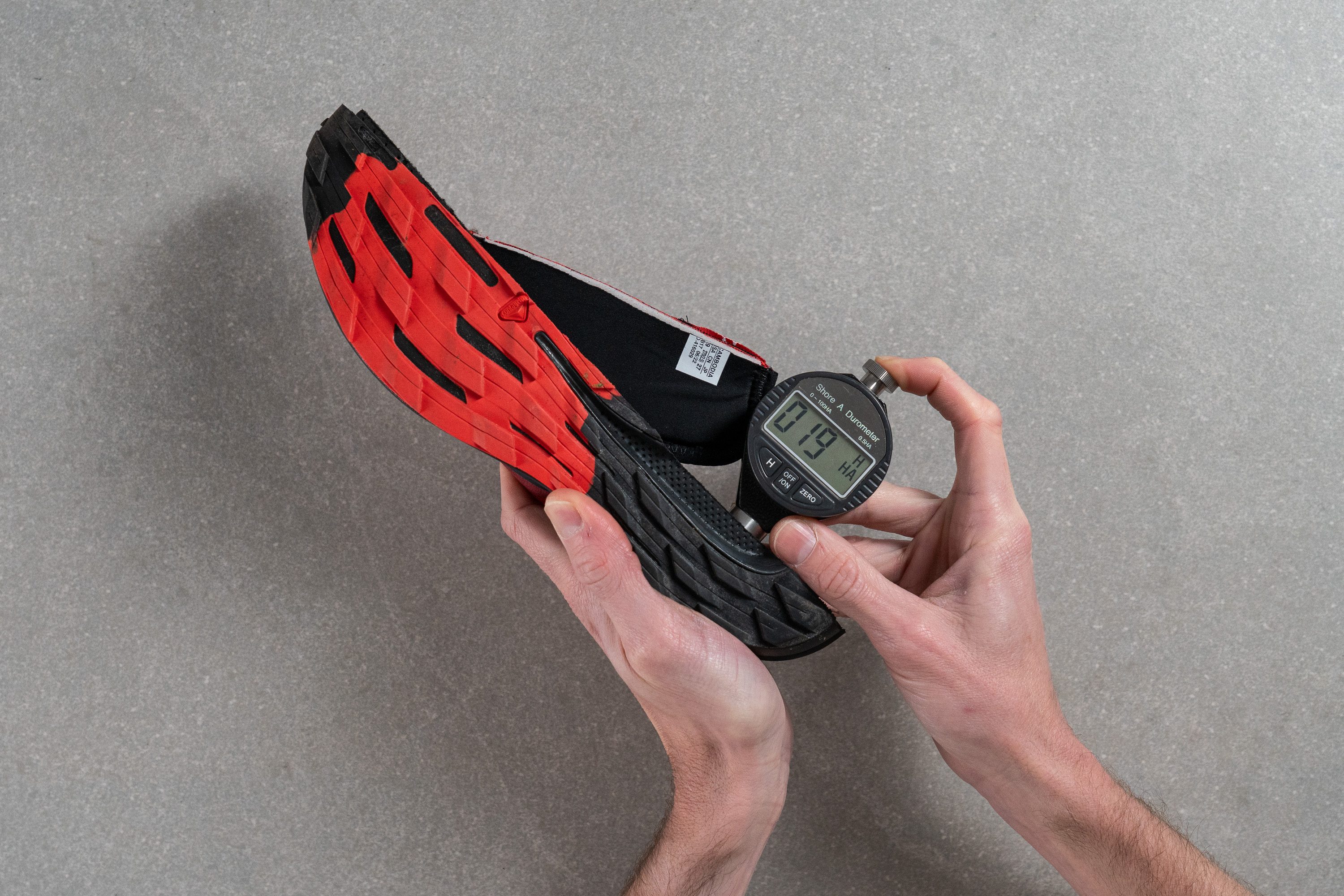
| Pulsar Trail | 18.7 HA |
| Average | 21.9 HA |
Size and fit
Size
Salomon Pulsar Trail fits true to size (28 votes).
Width / Fit
We can picture Salomon's designers aiming for "an average upper" in their discussions, and they managed to come close.
As the shoe's gel mould shows, its widest part sits right in the middle of the spectrum for trail shoes, measuring 96.0 mm between the big toe and the pinkie.
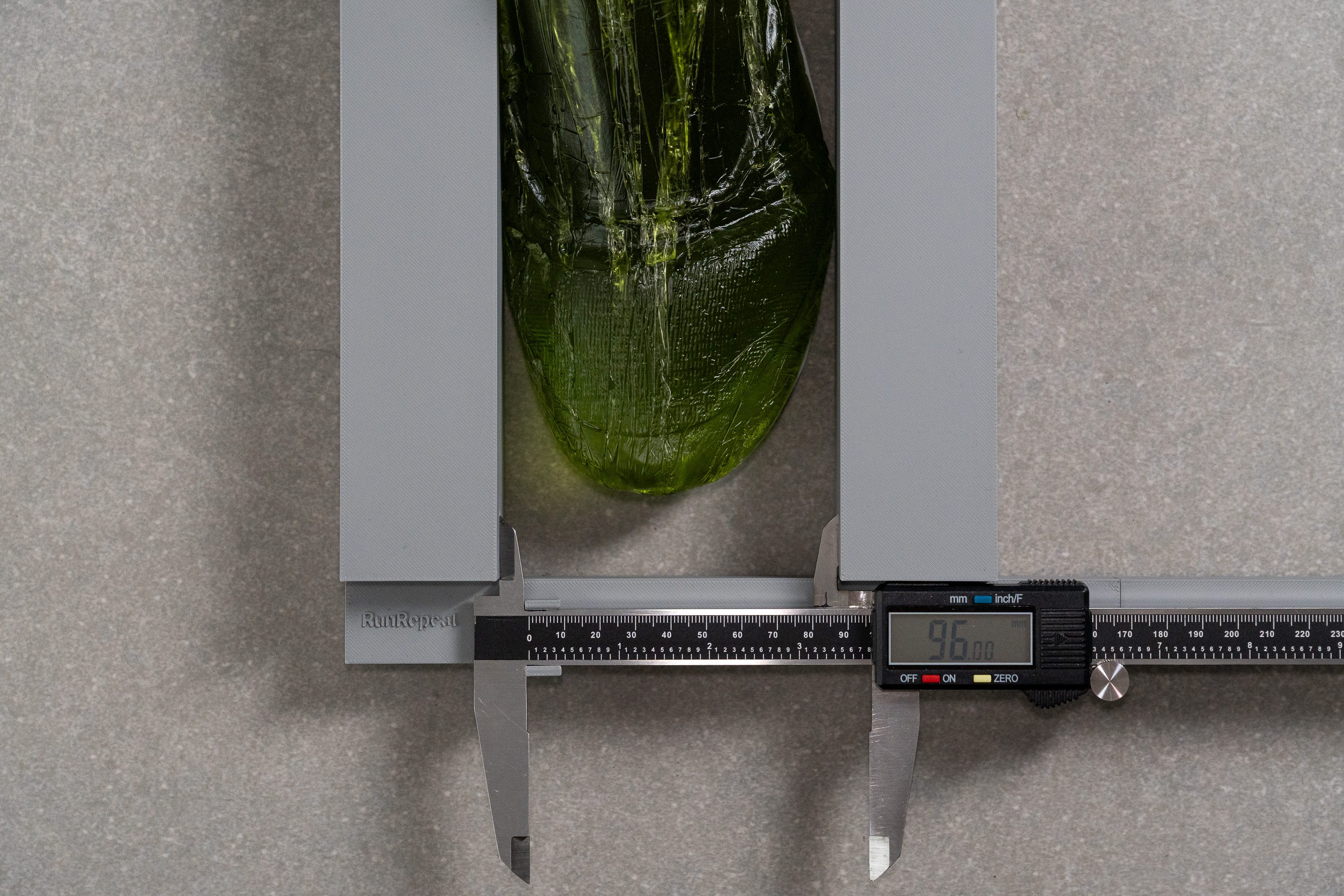
| Pulsar Trail | 96.0 mm |
| Average | 95.6 mm |
Toebox width
However, the shoe has some notable tapering towards the front which results in a below-average width of 71.8 mm near the big toe. This and the absence of wide options makes the Pulsar Trail more suitable for medium-to-narrow feet.
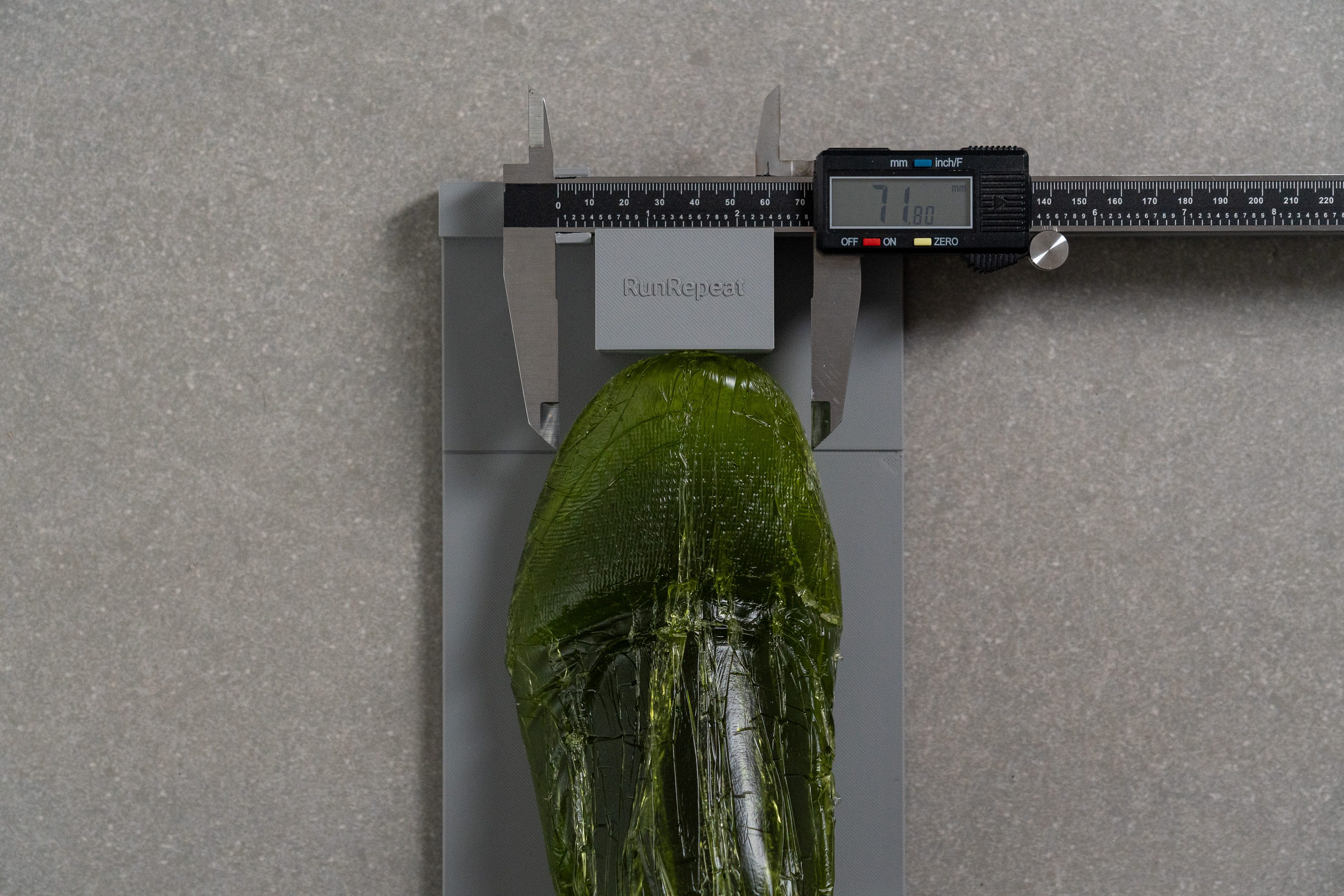
| Pulsar Trail | 71.8 mm |
| Average | 74.6 mm |
Toebox height
The shoe's vertical space is not very abundant either as its toebox height returned a shallower reading of 23.9 mm.
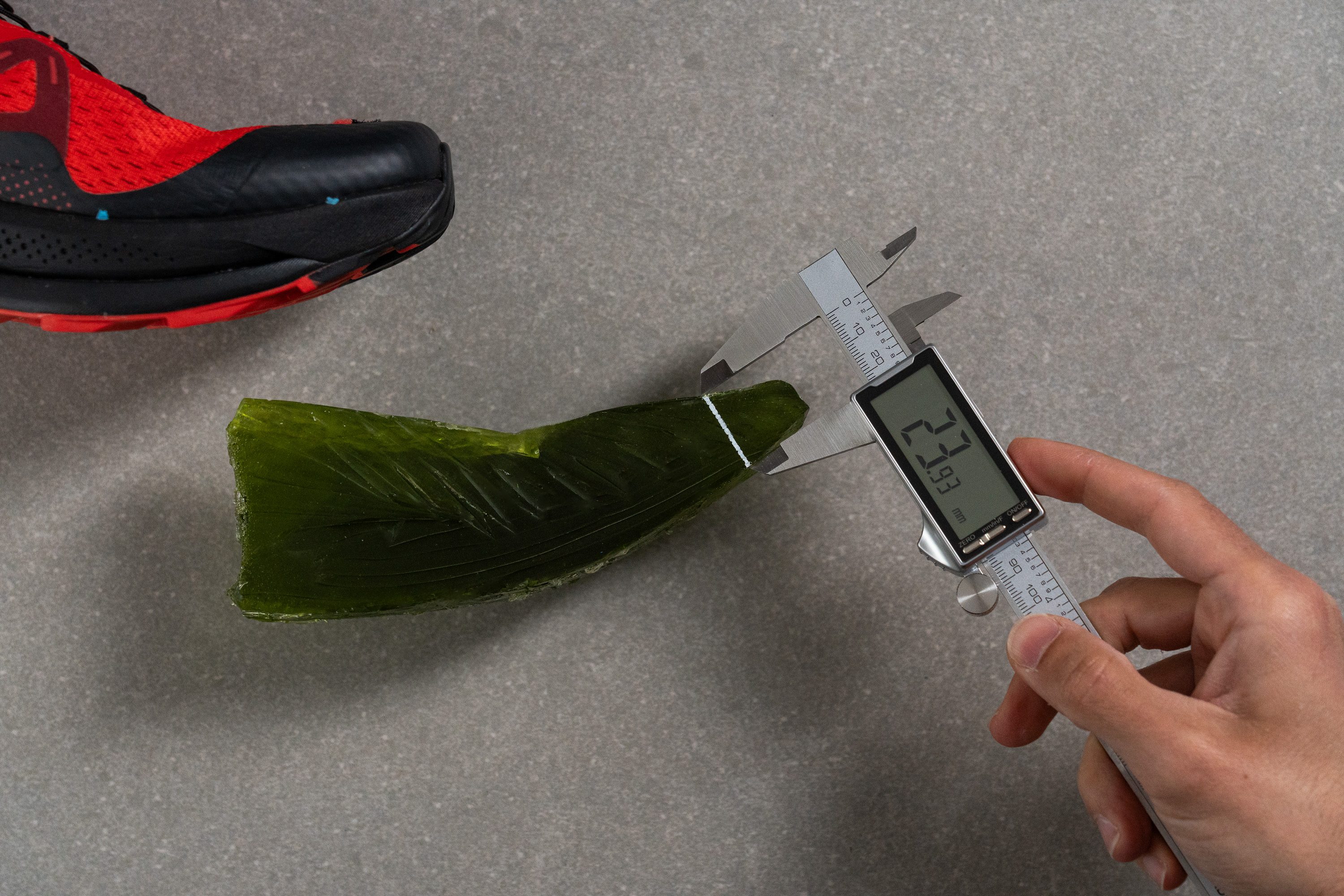
| Pulsar Trail | 23.9 mm |
| Average | 27.1 mm |
Traction / Grip
Lug depth
Returning to the outsole, we noticed it has short, 2.5-mm lugs, clearly designed for easy trails. This shoe excels on surfaces like grass, gravel or even coastal trails. However, based on our experience, we advise against using this shoe on technical terrain.
The lugs are longitudinal, and the outsole features cutouts that enhance flexibility and reduce weight.
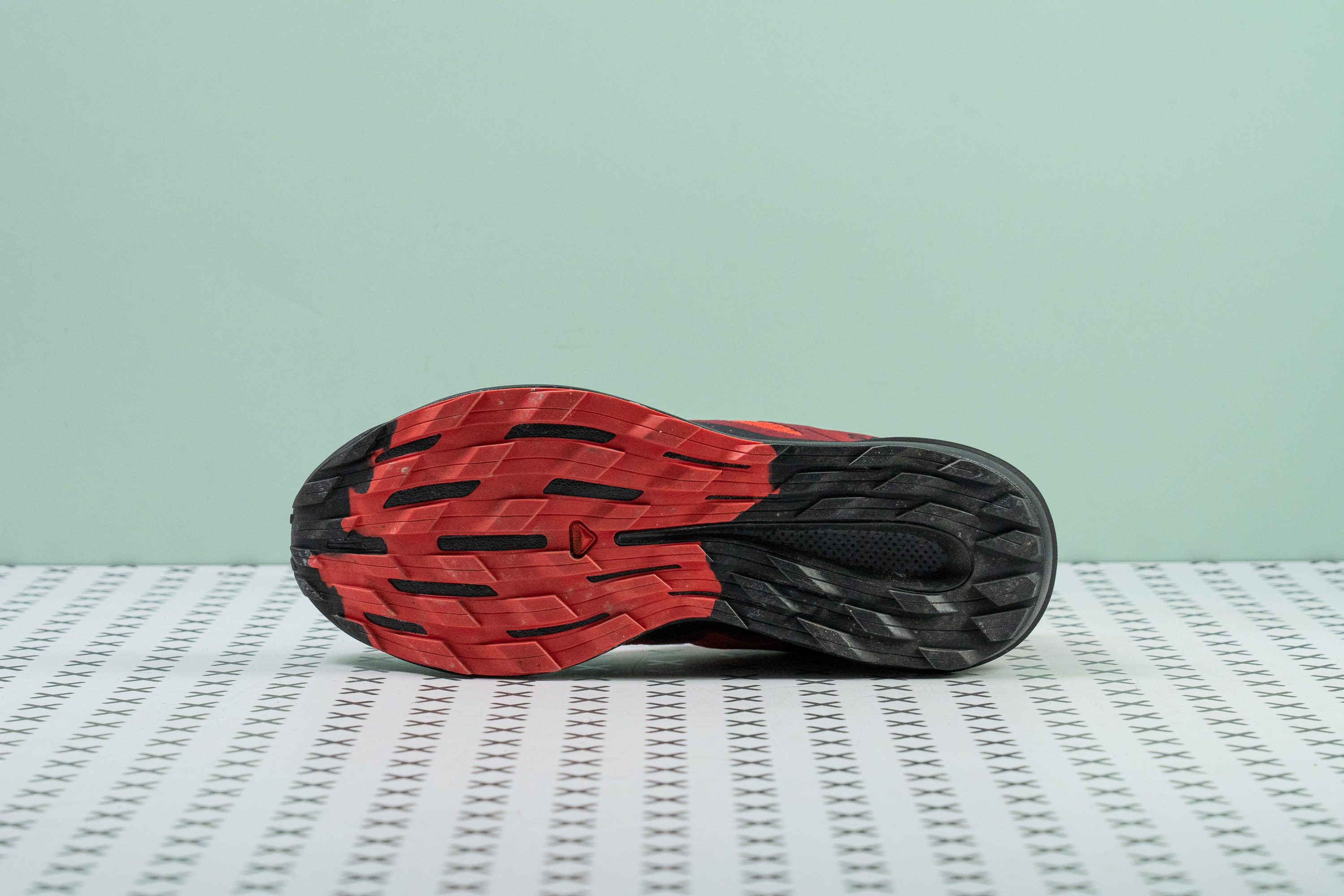
But this comes at the cost of lower performance on uphills and downhills, where chevron-shaped lugs generally perform better.
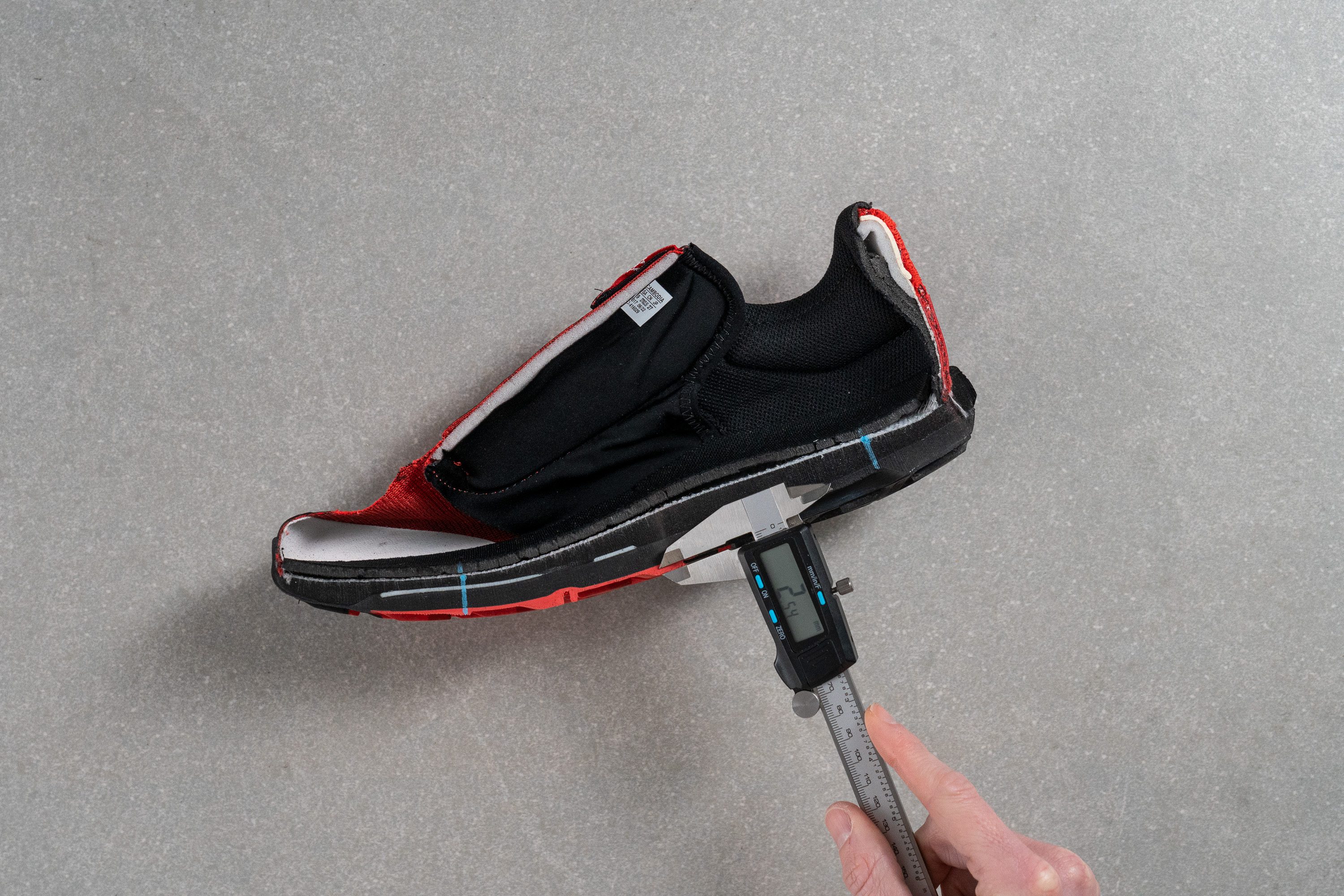
| Pulsar Trail | 2.5 mm |
| Average | 3.5 mm |
Flexibility / Stiffness
We were eager to conduct our 90-degree bend test, as the shoe felt remarkably flexible despite having a TPU plate and a thick outsole—this really caught our attention.
The test showed that we only needed to produce 25.3N of force to bend the shoe to 90 degrees, which is less than the average shoe, despite having a plate.
This test follows an older methodology, which is why you don't see recently tested shoes in the chart. Results from different methodologies can not be compared.
| Pulsar Trail | 25.3N |
| Average | 27.1N |
Stiffness in cold
We conducted the same test again, but this time in cold temperatures, to check if the shoe's underfoot stiffness changed after 20 minutes in the freezer. In these conditions, the shoe was a bit stiffer, needing 31.7N to bend, but the difference was hardly noticeable.
| Pulsar Trail | 31.7N |
| Average | 35.9N |
Stiffness in cold (%)
That's a 25.2% difference, once again surpassing the average shoe. The Energy Surge foam really delivered in this aspect, all wrapped up in an affordable £130 package.
| Pulsar Trail | 25% |
| Average | 32% |
Weight
Weighing in at 9.9 oz (281g), Salomon made a serious effort to keep the shoe under the 10-oz benchmark, and they did achieve that.
Yet, considering its stack height and dimensions, we think this shoe could be lighter. There's definitely room for improvement in the next version.
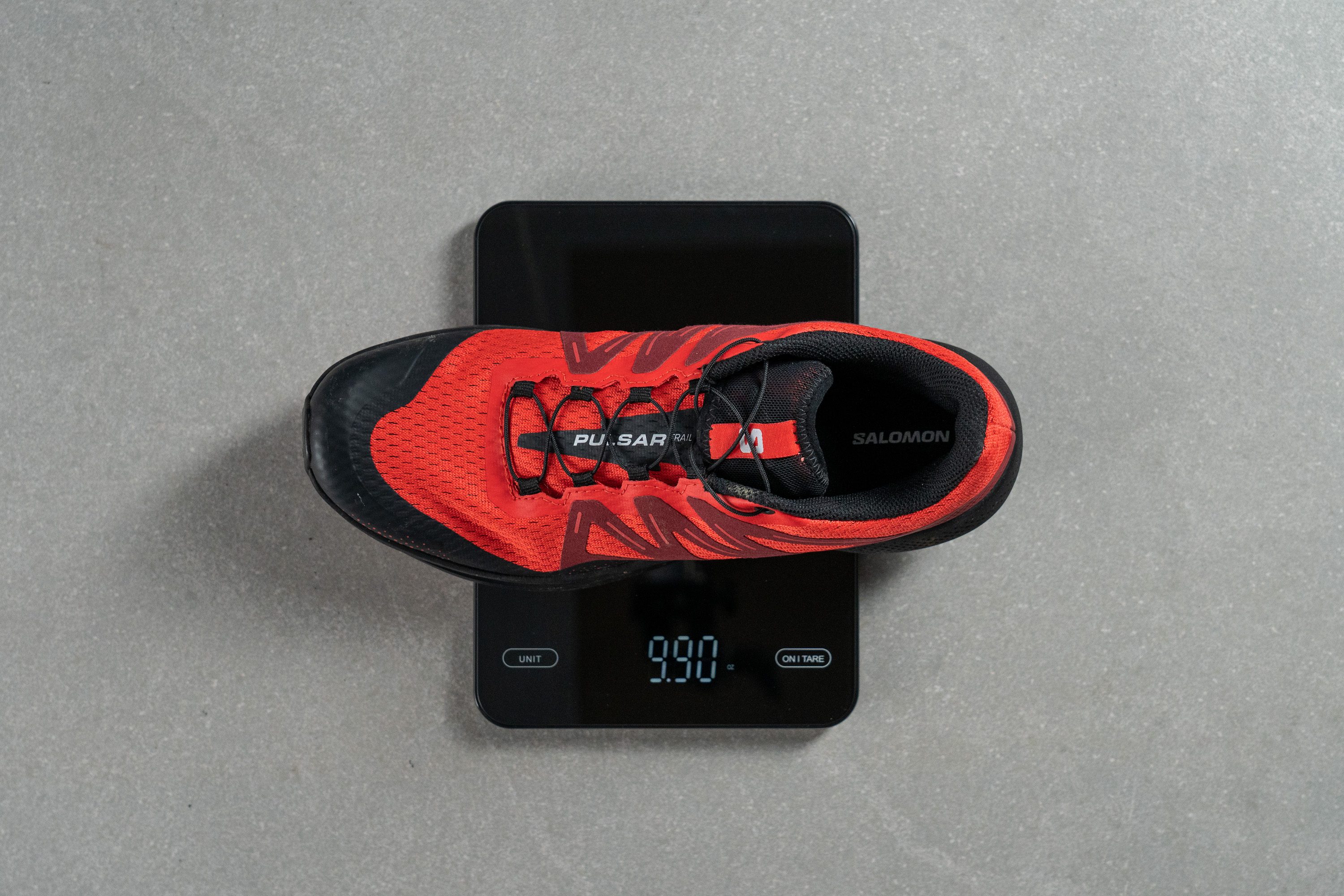
| Pulsar Trail | 9.9 oz (281g) |
| Average | 10.2 oz (289g) |
Breathability
We kicked off with one of our favourite tests in the lab—the smoke test. It's our ultimate way to check a shoe's breathability. The Pulsar Trail really impressed us here, showing off jaw-dropping airflow for a trail shoe that scored a solid 4 out of 5.
To pinpoint the most and least breathable parts of the upper, we shone a powerful light on it. We noticed Salomon's smart design in the toebox, enhancing airflow in that area. Meanwhile, they beefed up the midfoot for more durability and less ventilation.
As we observed the good airflow, we decided to take an up-close look. We found that Salomon crafted tiny ventilation holes in the toebox.

These weren't as big as those typically seen in road running shoes, but they were definitely effective.

This clever design not only boosts breathability but also adds a nice stretchy feel to the upper, as you can see in this video.
| Pulsar Trail | 4 |
| Average | 3.2 |
Stability
Lateral stability test
Let's be clear—the shoe is incredibly stable for neutral runners.
This stability comes from a generously wide platform, combined with a TPU plate and a relatively low-stacked midsole that doesn't compress too much. The combination of these features creates a supportive ride we absolutely loved.
Torsional rigidity
One of the key benefits of a TPU-based plate over a carbon-fibre plate is that it doesn't make the shoe excessively rigid. This is crucial for a training shoe, as too much rigidity can lead to discomfort.
Fortunately, the Pulsar Trail earns 4 out of 5 in this test, balancing flexibility and support effectively.
| Pulsar Trail | 4 |
| Average | 3.6 |
Heel counter stiffness
The heel is even more flexible, scoring 3 out of 5. This flexibility is great for a shoe designed for a variety of activities, including hiking or even walking in a park.
In simple terms, this shoe could be your go-to travel companion, perfect for a city tour in the morning and a jog in the forest in the evening.
| Pulsar Trail | 3 |
| Average | 3 |
Midsole width - forefoot
When we measured the widest part of the sole in the forefoot, we found it to be 111.3 mm, which is pretty average and seems sufficient for this shoe.
Going any wider could have resulted in a bulky shoe, potentially weighing over 11 or 12 ounces. That wouldn't be worth it, especially since the shoe is already stable.
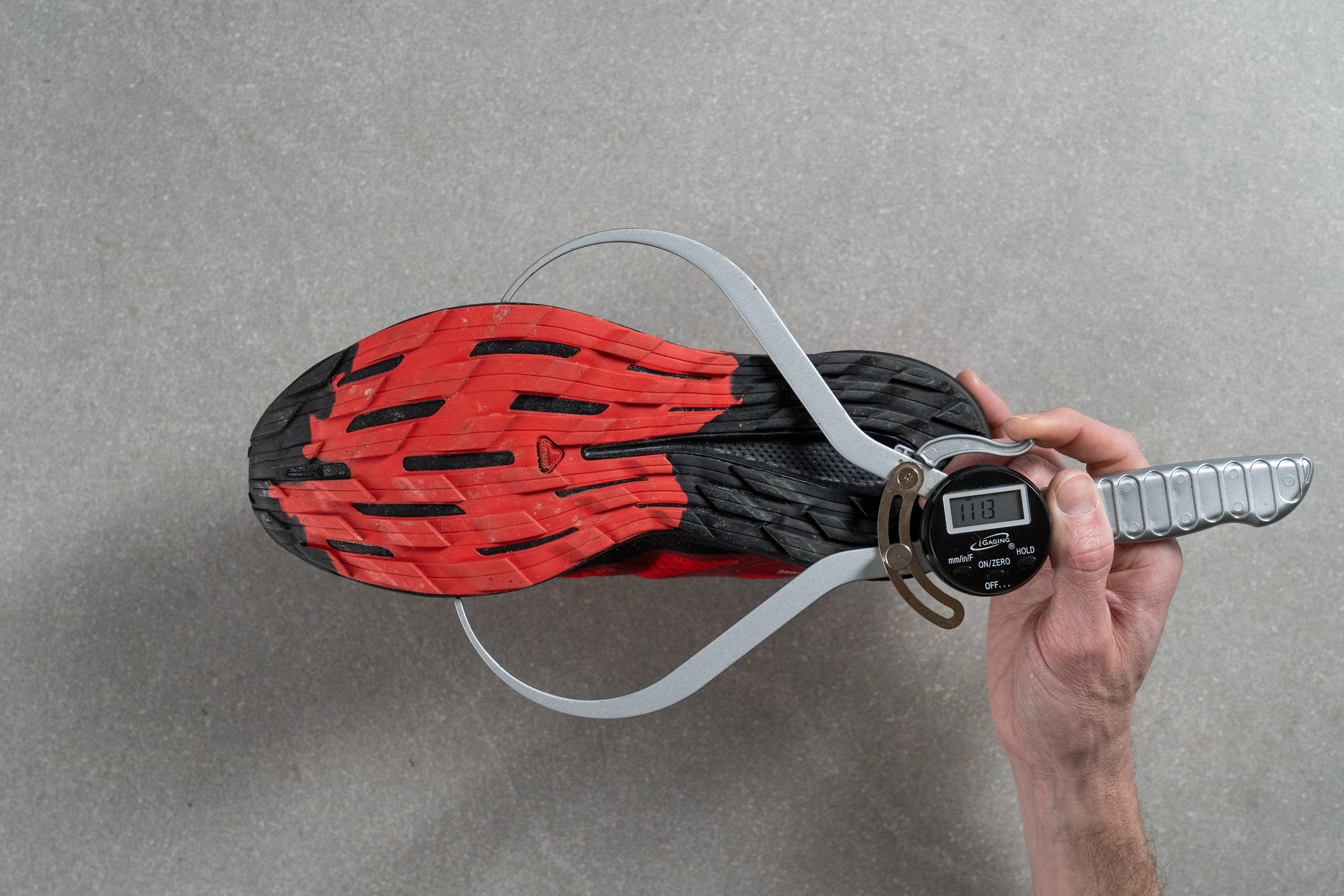
| Pulsar Trail | 111.3 mm |
| Average | 112.8 mm |
Midsole width - heel
The heel is quite narrow, measuring at 86.0 mm. This suggests that the shoe might feel a bit unstable for heel strikers.

However, this is something you'd typically expect with Salomon, as they have a history of crafting narrow, performance-oriented shoes.
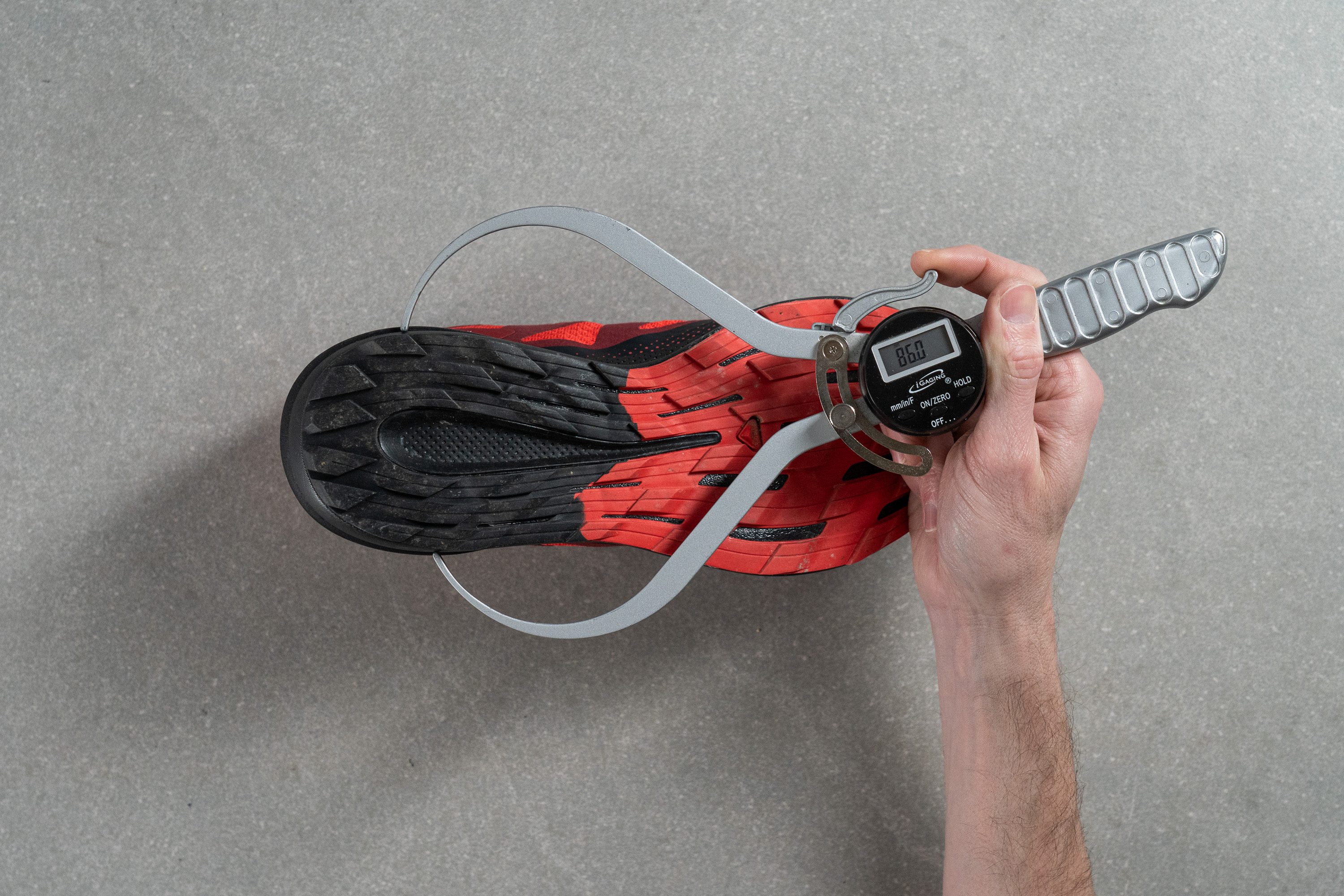
| Pulsar Trail | 86.0 mm |
| Average | 89.9 mm |
Durability
Toebox durability
The challenge with a breathable upper is often its durability. Because of that, Salomon added several TPU overlays to reinforce the upper.
This was their strategy to maintain decent durability and secure an average score of 3 out of 5 in our Dremel test on the toebox.
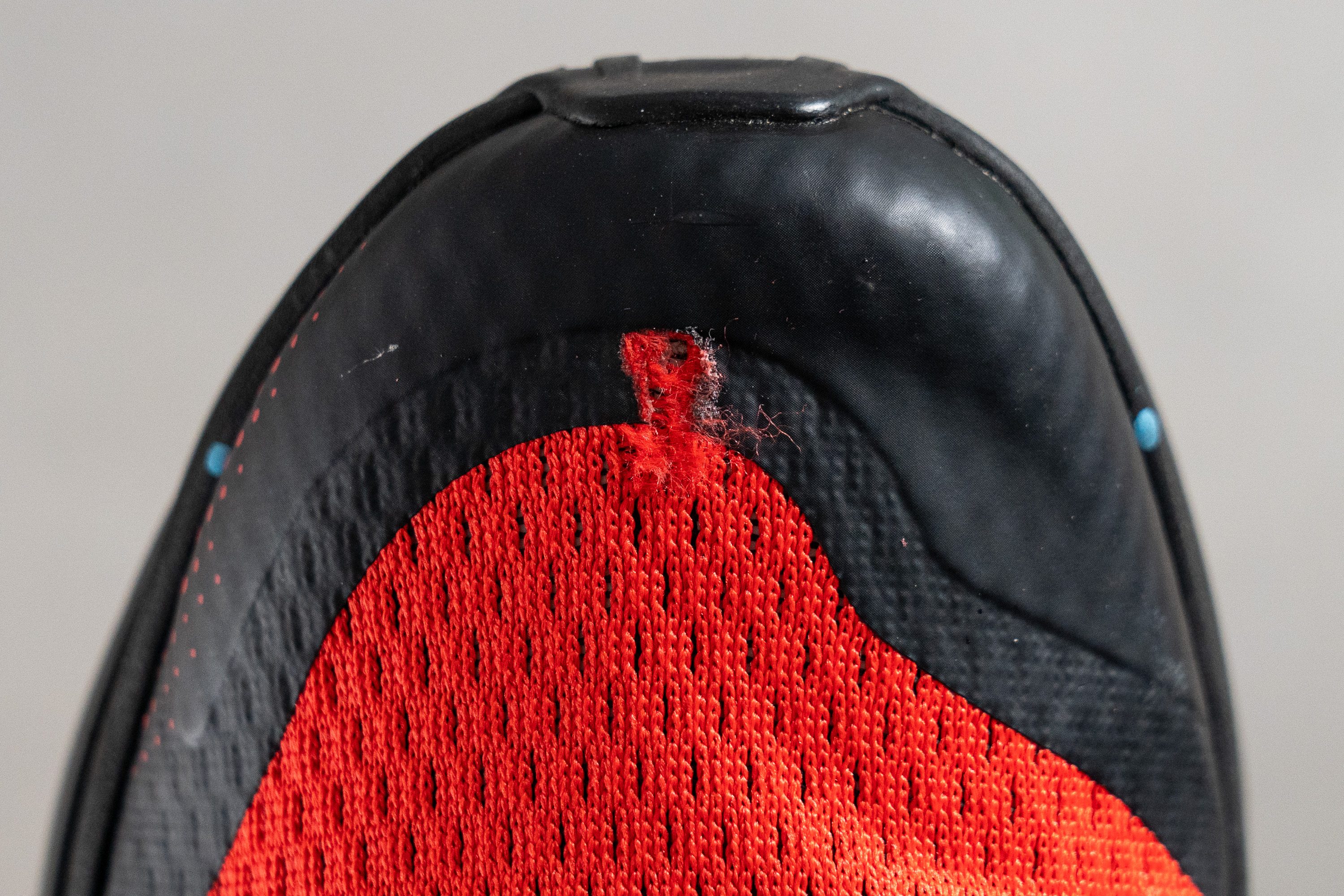
| Pulsar Trail | 3 |
| Average | 3.1 |
Heel padding durability
We then turned our attention to the heel padding area, a common trouble spot for early wear in many shoes.
However, the Pulsar Trail stood out from the crowd here in the lab, acing one of our most challenging tests with a score of 5 out of 5.
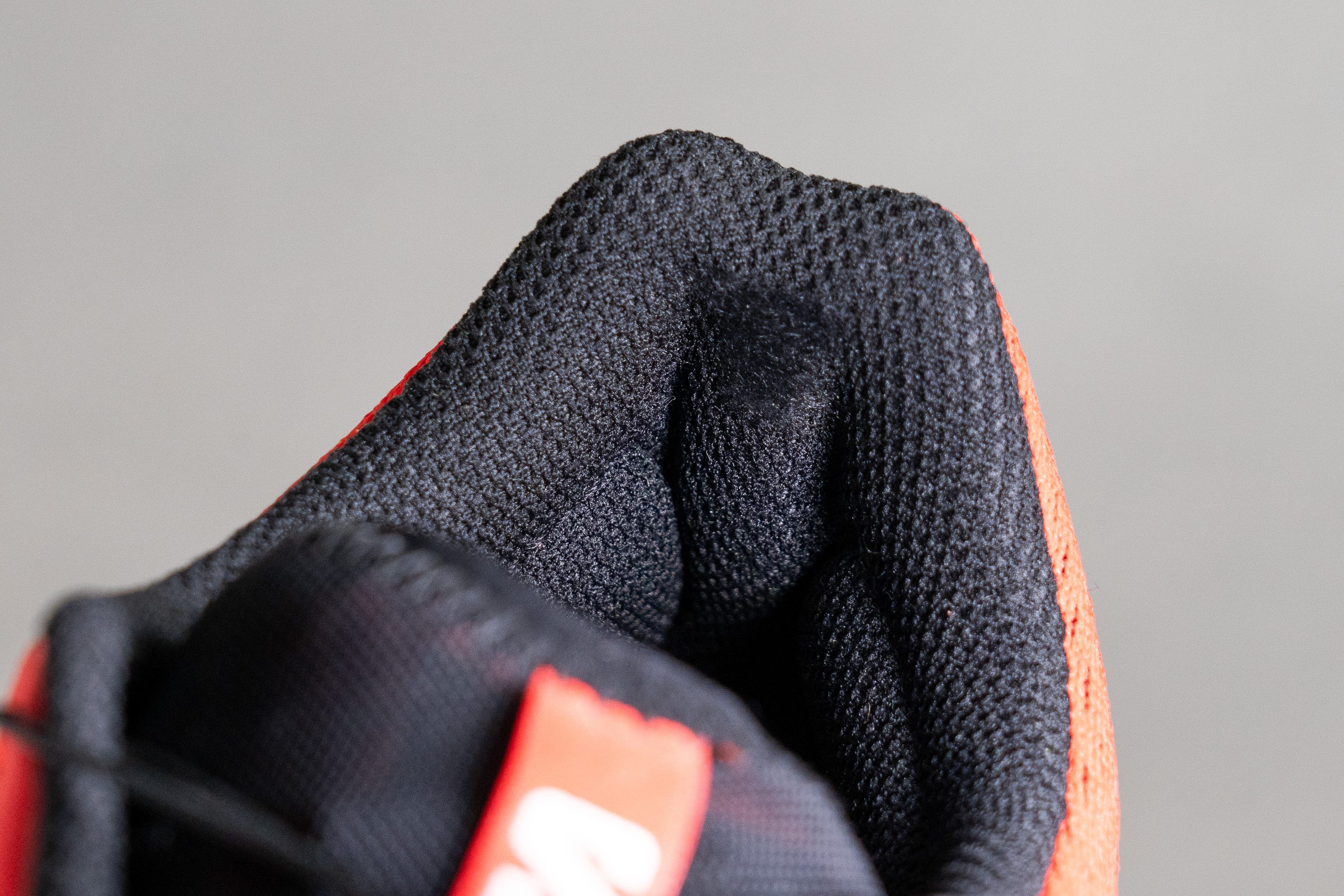
| Pulsar Trail | 5 |
| Average | 3 |
Outsole hardness
After seeing such great results, we eagerly moved on to the outsole to see if this Salomon continues to deliver outstanding durability.
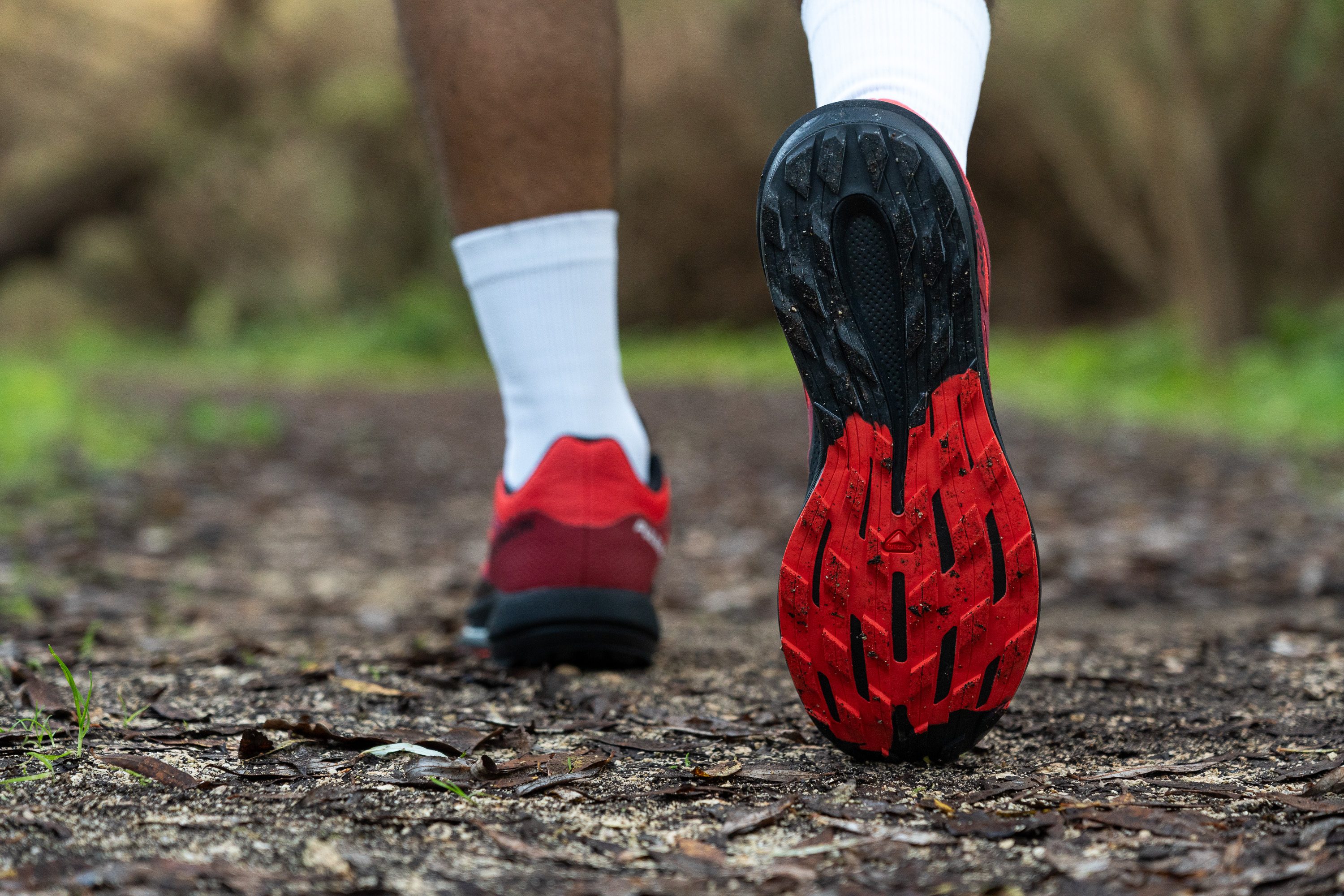
The first aspect we tested on the outsole was its hardness (89.1 HC). Salomon chose to use its hard Contagrip rubber. This choice seems to aim for decent durability, possibly at the expense of some grip, especially in wet conditions.

| Pulsar Trail | 89.1 HC |
| Average | 85.8 HC |
Outsole durability
Given the outsole formulation leans towards the harder side of the spectrum, will it perform well in our final Dremel test?
Not exactly. We'd rate it as just average. Our measurements showed a 0.9-mm indentation, which is fine, but not exceptional.

| Pulsar Trail | 0.9 mm |
| Average | 0.9 mm |
Outsole thickness
However, the Pulsar Trail comes with a substantial amount of rubber—2.4 mm—to ensure long-lasting durability.
This thickness—plus the Energy Blade plate—also makes the ride a bit muted, as the midsole is quite far from the ground. Therefore, we see it as better suited for soft surfaces.
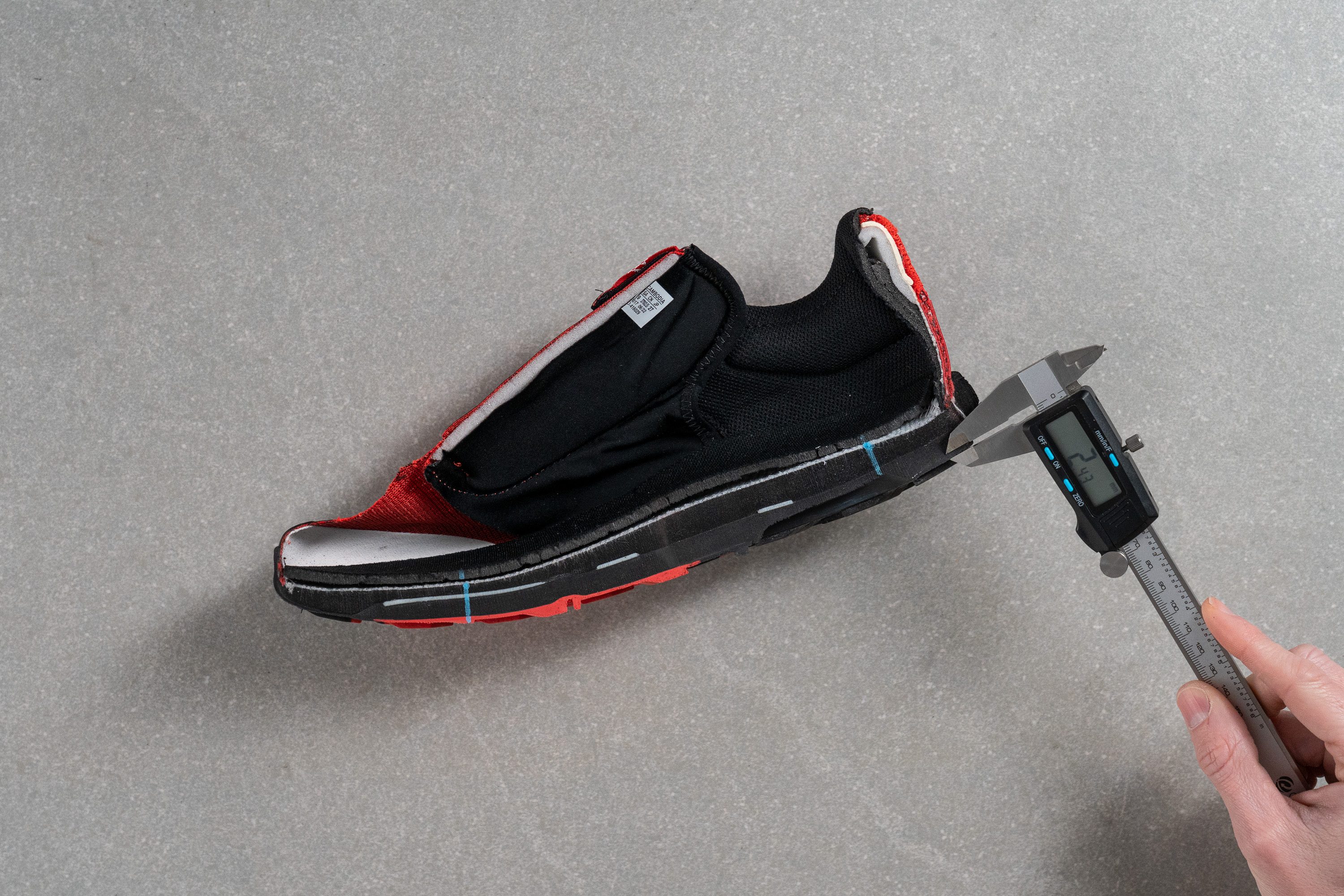
| Pulsar Trail | 2.4 mm |
| Average | 2.2 mm |
Misc
Insole thickness
The insole is on the thinner side, measuring 3.7 mm, but we found it to be both sufficient and comfortable.
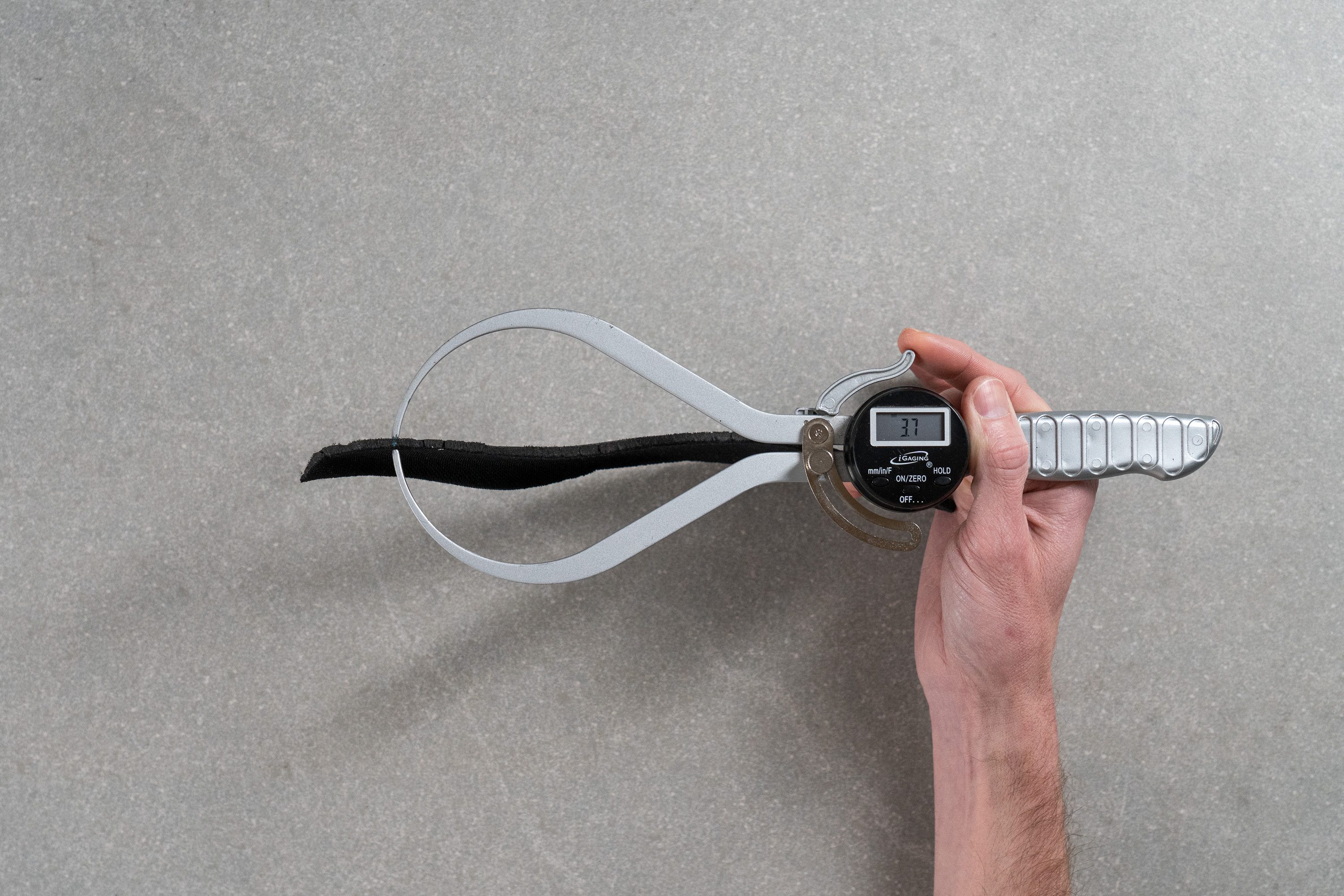
| Pulsar Trail | 3.7 mm |
| Average | 4.7 mm |
Removable insole
The insole of the Salomon Pulsar Trail is removable and pretty standard.
This is interesting because Salomon sometimes uses custom-made, flared insoles by Ortholite, like in the Speedcross 6 GTX. However, this isn't the case here, so you can confidently swap it for any other insole that fits inside the shoe.

| Pulsar Trail | Yes |
Midsole softness in cold
Many trail runners like you might be wearing this Salomon trail shoe in chilly climates. To simulate these conditions, we placed the shoe in the freezer for 20 minutes.
Afterward, we redid the durometer test and were pleasantly surprised to find that the shoe's midsole had only slightly firmed up, reaching just 19.6 HA.
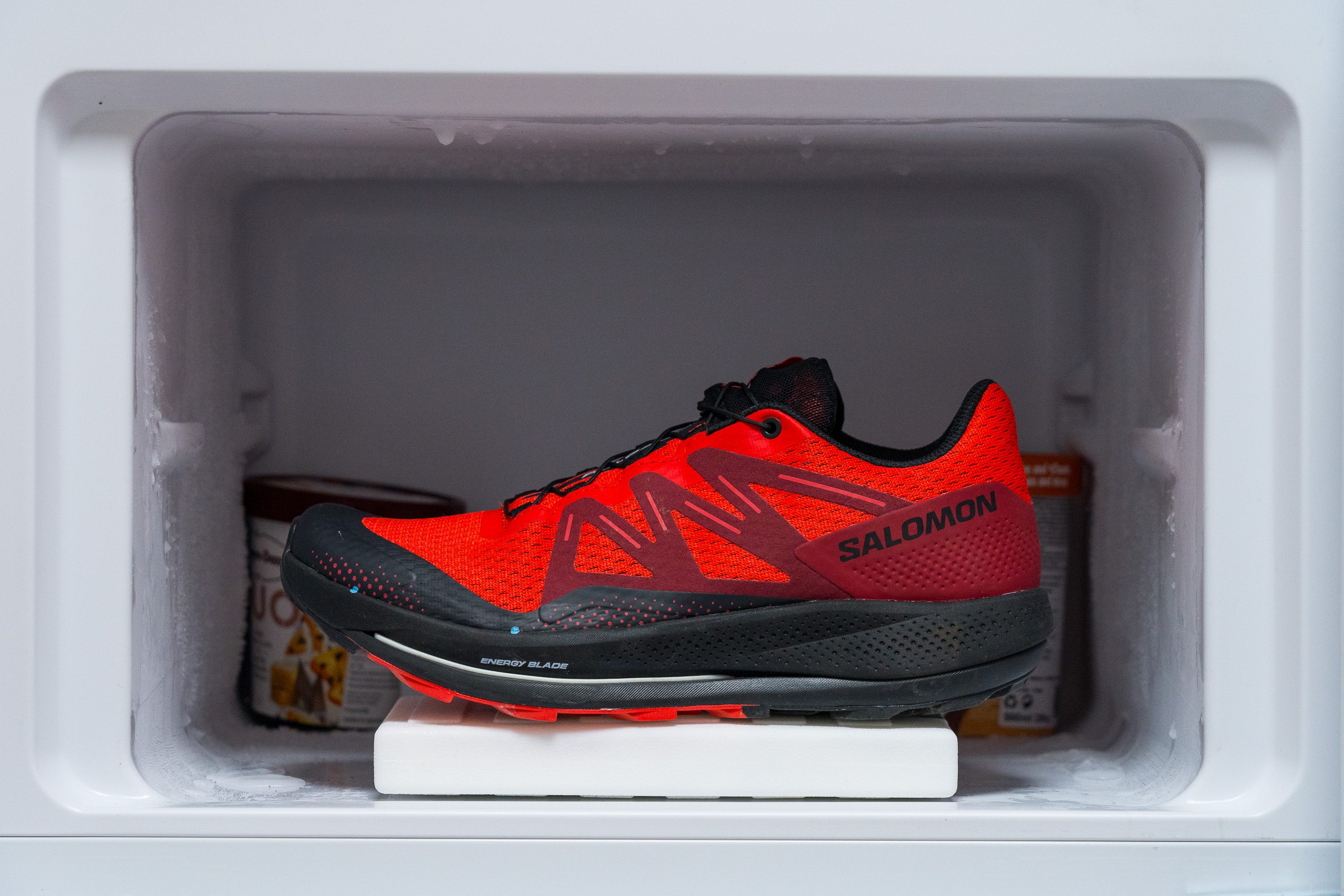
| Pulsar Trail | 19.6 HA |
| Average | 27.4 HA |
Midsole softness in cold (%)
That's a minimal increase of just 4.9%, a remarkable result that outshines most shoes on the market. It appears to us that mixing EVA foam with Olefin (OBC) was truly a worthwhile choice!
| Pulsar Trail | 5% |
| Average | 26% |
Reflective elements
At just £130, we don't expect Salomon to include details like reflective elements, as these extras are typically found only in their higher-end shoes.

| Pulsar Trail | No |
Tongue padding
The tongue is heavily padded at 8.3 mm, offering amazing comfort for long distances, and it's perfect for those who love that extra cosy feeling.
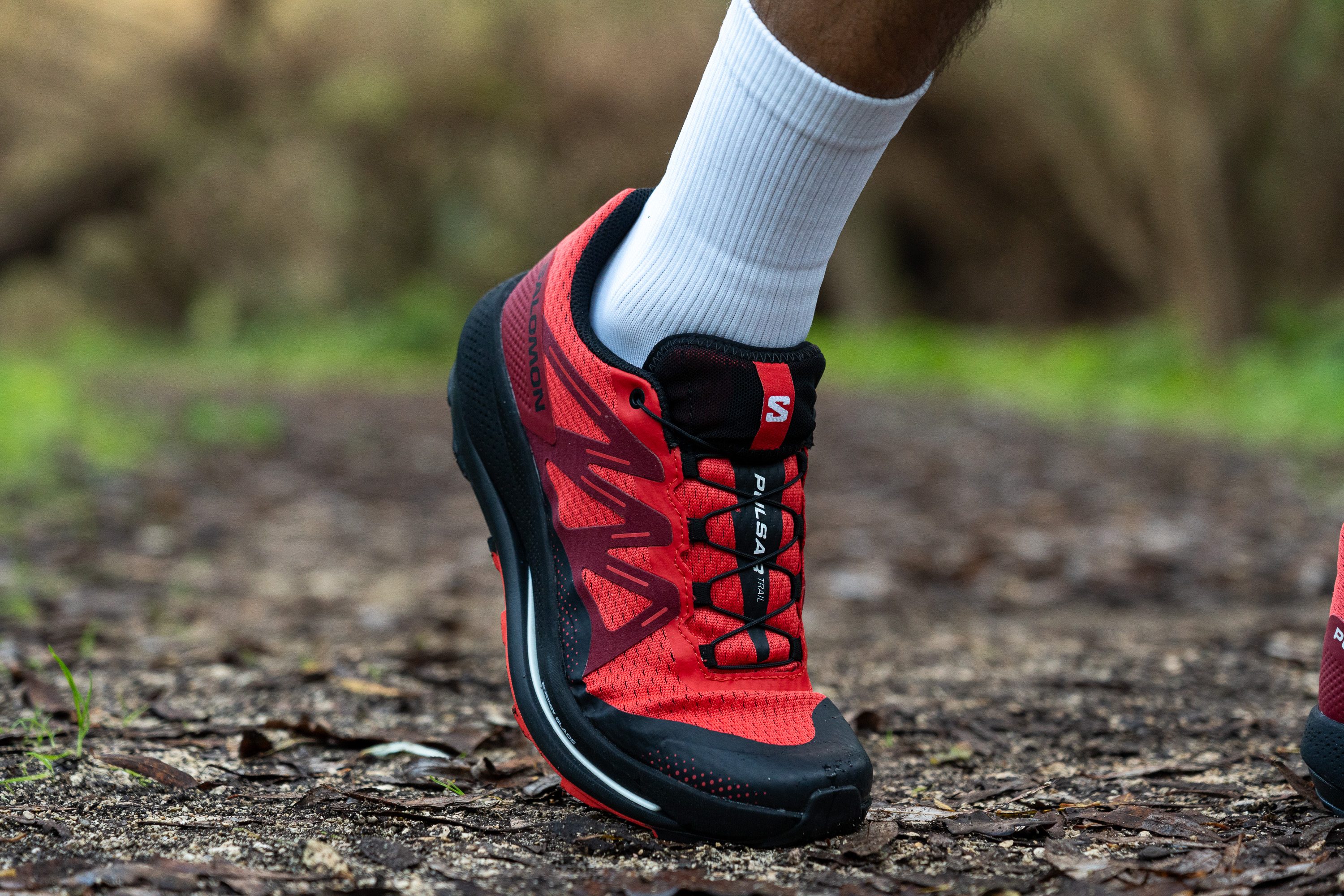
However, with Salomon shoes, we usually prefer thinner tongues since they mean less weight. Plus, the QuickLace system reduces the likelihood of lace bite or similar issues on the instep.
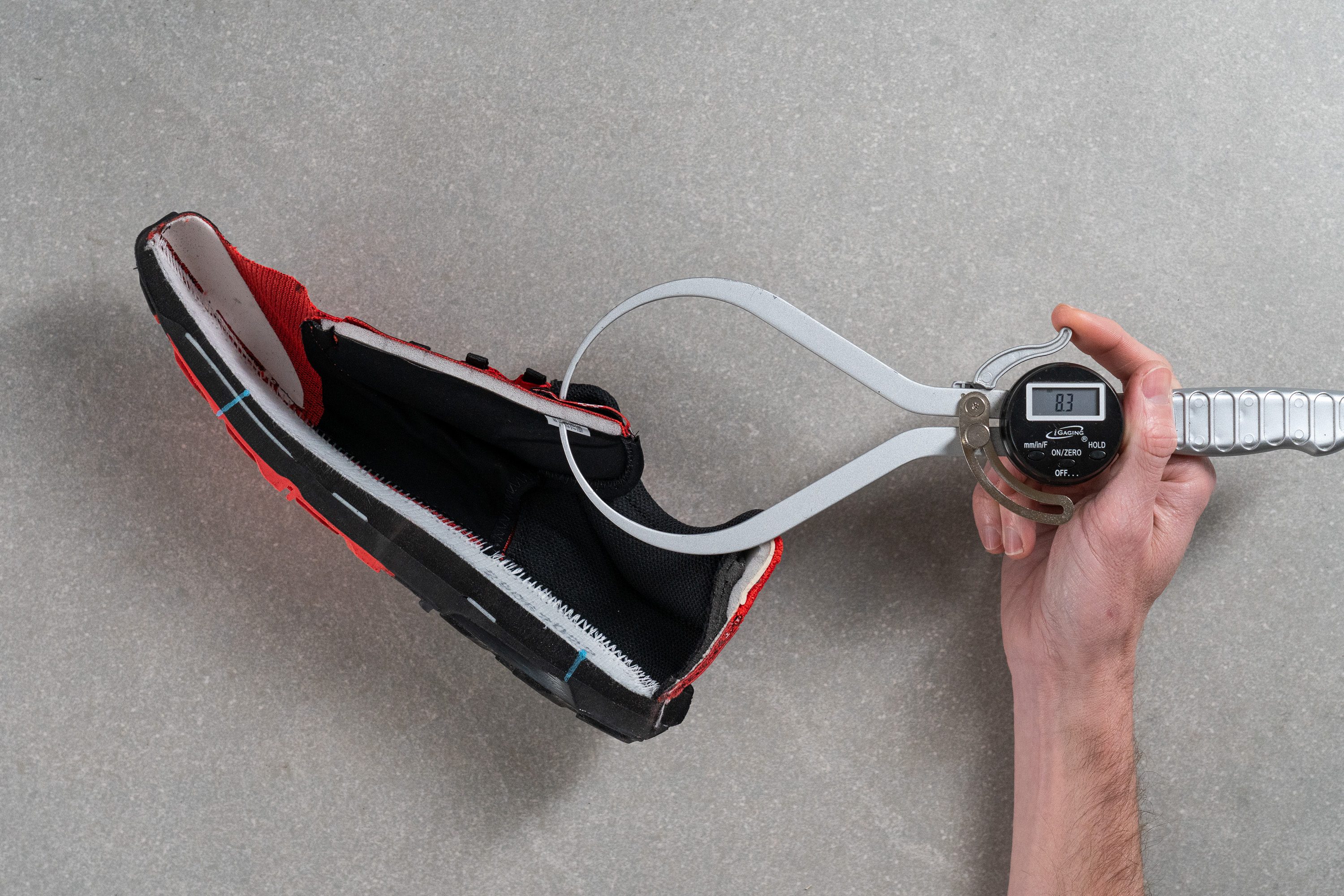
| Pulsar Trail | 8.3 mm |
| Average | 6.4 mm |
Tongue: gusset type
The tongue is fully gusseted, which is a fantastic feature in any trail shoe, and a real treat in a shoe that's fairly priced at £130.
Many budget-friendly shoes come with non-gusseted tongues that allow debris to enter, but happily, that's not this Salomon.
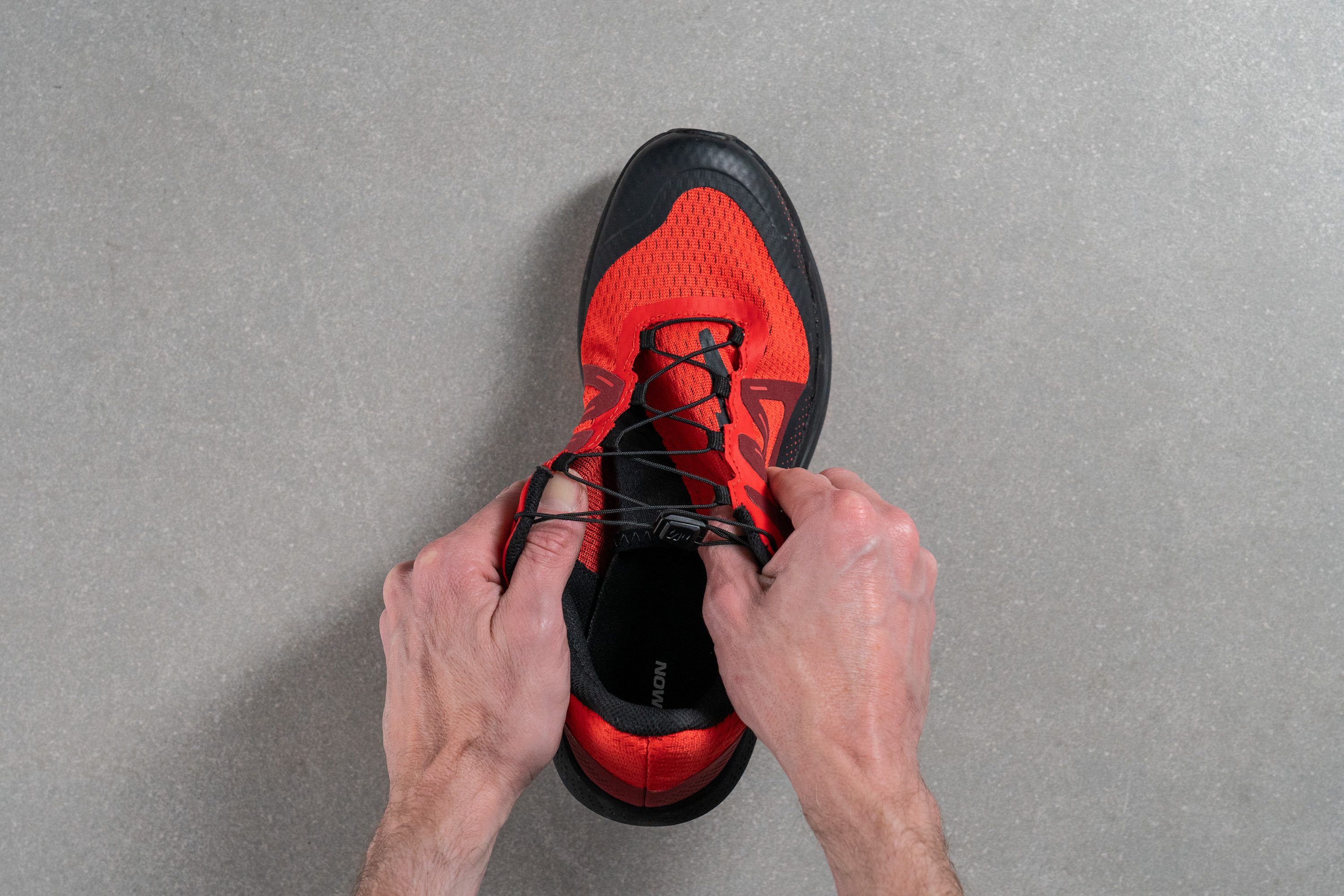
| Pulsar Trail | Both sides (full) |
Heel tab
There's no heel tab in the rear of the shoe, but we didn't miss it thanks to the shoe's design and how easy it is to put on.
Besides, the shoe is already on the heavier side, so adding more weight seems unnecessary.
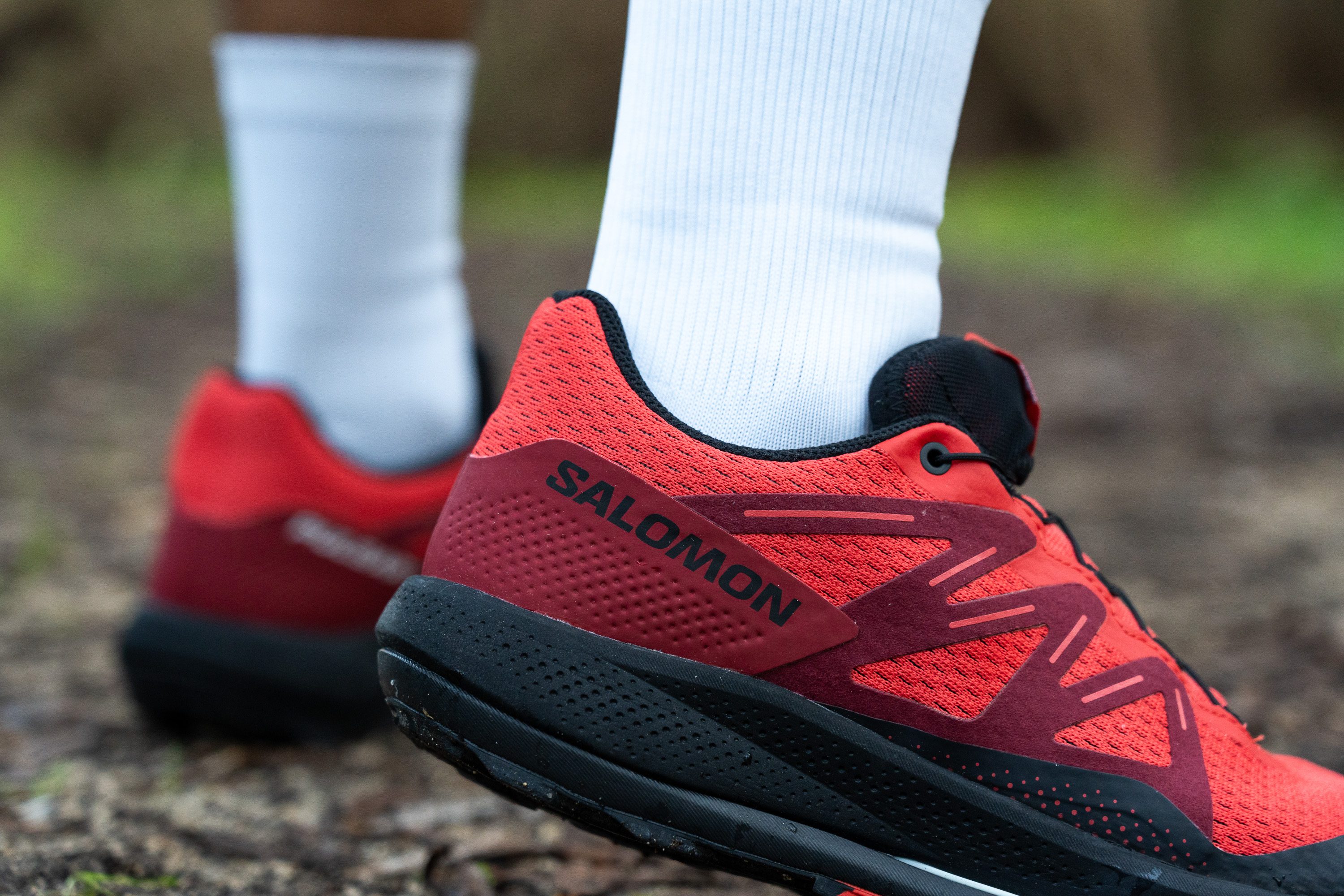
| Pulsar Trail | None |

